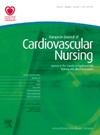covid-19大流行期间的高血压管理和结果:诊断、血压远程监测的使用和死亡率
IF 3.9
3区 医学
Q2 CARDIAC & CARDIOVASCULAR SYSTEMS
引用次数: 0
摘要
导言 COVID-19 对高血压患者的影响尚不清楚,但由于 COVID 后心血管事件风险增加(1)以及人们获得医疗保健的方式改变(2),其影响可能非常严重。本研究旨在探讨 COVID-19 对苏格兰高血压人群的直接影响。方法 该研究使用了相关的常规临床数据。在 2019 年 3 月至 2021 年 2 月期间,通过处方信息系统 (PIS) 确定了苏格兰国家医疗服务系统 (NHS) 五个卫生局的高血压患者。关联数据包括 "Connect Me BP "服务提供的血压远程监测数据、苏格兰发病率记录提供的结果数据(心血管事件和死亡率),以及苏格兰公共卫生部门(PHS)提供的苏格兰国家记录 COVID-19 检测和疫苗接种记录。随访至 2022 年 2 月。苏格兰公共卫生署的研究机构 EDRIS 对数据进行了链接和匿名处理,并将其传输到安全的国家安全分析平台,供研究团队访问。该研究获得了健康和社会保健公共利益和隐私小组的批准。结果 在整个成人年龄段中发现了近 45 万名高血压患者,其中 52% 为男性。其中,89%的患者在研究之前就已确诊。在 COVID-19 大流行的第一年,新诊断率下降了 50%以上。在大流行期间,长期血压远程监测的使用人数从 5000 人迅速增加到 10,000 多人。总死亡率超过 8%。在大流行期间,死亡率显示出与普通人群相似的模式,并一直高于大流行前的水平,直到 2022 年 2 月随访期结束。讨论 在 COVID-19 严重破坏正常服务时,血压远程监测为医疗服务提供了支持。然而,数据表明,未确诊的高血压患者人数可能会增加,从而导致心血管风险升高。这部分人群的死亡率因 COVID-19 大流行而上升,并仍高于大流行前的水平。本文章由计算机程序翻译,如有差异,请以英文原文为准。
Hypertension management and outcomes during the covid-19 pandemic: diagnosis, blood pressure telemonitoring use and mortality
Introduction The effects of COVID-19 on people with hypertension are poorly understood, but potentially severe both due to increased risk of cardiovascular events post covid (1) and by altering the way people accessed healthcare (2). This study aimed to explore the immediate impact of COVID-19 on the hypertensive population in Scotland. Methods The study used linked routine clinical data. Hypertensive patients from five NHS Scotland Health Boards were identified through the Prescribing Information System (PIS) between March 2019 and February 2021. Linked data included Blood Pressure (BP) telemonitoring data from the Connect Me BP service, outcome data (cardiovascular events and mortality) from Scottish Morbidity Records, and National Records of Scotland COVID-19 testing and vaccination records from Public Health Scotland (PHS). Follow up was until February 2022. EDRIS, the research arm of PHS, linked and pseudonymised the data and transferred it to the secure national safe haven analysis platform for access by the research team. The study was approved by the Public Benefit and Privacy Panel for Health and Social Care. Results Almost 450,000 people with hypertension were identified across the whole adult age range, 52% male. Of those, 89% had been diagnosed prior to the study. New diagnoses dropped by over 50% during the first year of the COVID-19 pandemic. The use of long term BP telemonitoring increased rapidly during the pandemic from 5000 to over 10,000. Overall mortality was over 8%. Mortality rates showed a similar pattern to the general population during the pandemic and remained above pre-pandemic levels until the end of the follow up period in February 2022. Discussion BP telemonitoring supported healthcare delivery at a time when normal services were severely disrupted due to COVID-19. However the data suggests that there may be an increase in the number of people with undiagnosed hypertension with associated raised cardiovascular risk. Mortality in this population was increased by the COVID-19 pandemic and remained above pre-pandemic levels.
求助全文
通过发布文献求助,成功后即可免费获取论文全文。
去求助
来源期刊

European Journal of Cardiovascular Nursing
CARDIAC & CARDIOVASCULAR SYSTEMS-NURSING
CiteScore
5.10
自引率
10.30%
发文量
247
审稿时长
6-12 weeks
期刊介绍:
The peer-reviewed journal of the European Society of Cardiology’s Council on Cardiovascular Nursing and Allied Professions (CCNAP) covering the broad field of cardiovascular nursing including chronic and acute care, cardiac rehabilitation, primary and secondary prevention, heart failure, acute coronary syndromes, interventional cardiology, cardiac care, and vascular nursing.
 求助内容:
求助内容: 应助结果提醒方式:
应助结果提醒方式:


